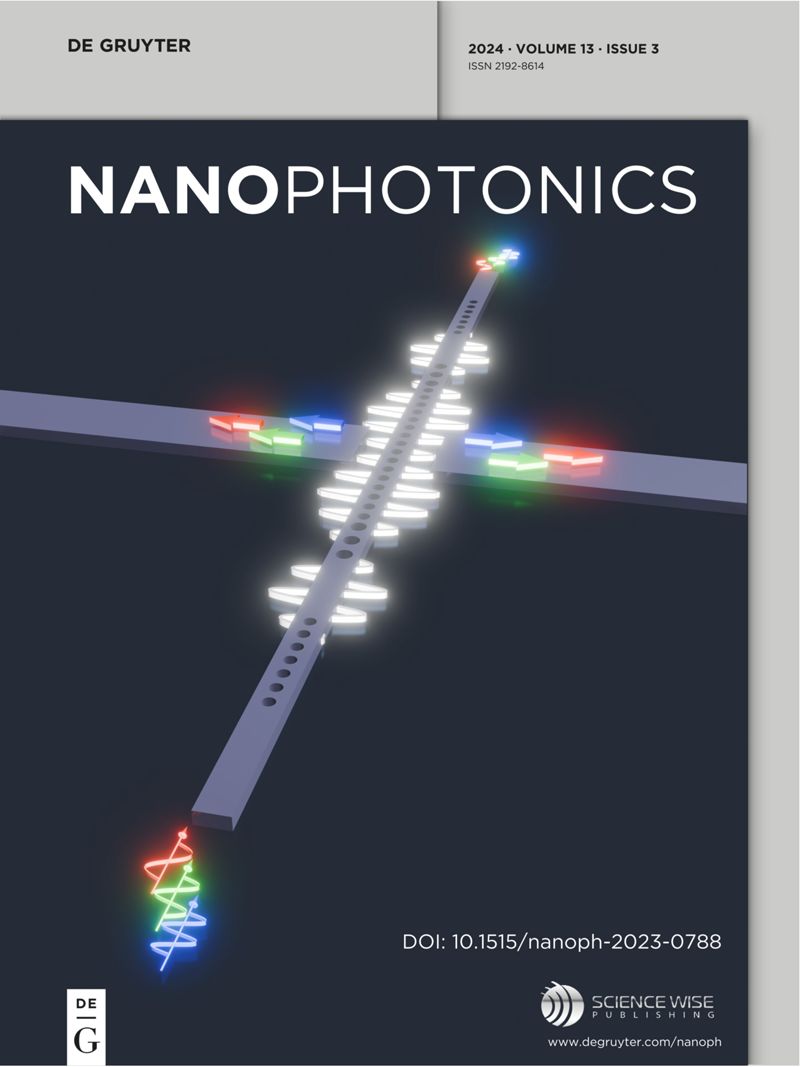Anchor-controlled generative adversarial network for high-fidelity electromagnetic and structurally diverse metasurface design
IF 6.6
2区 物理与天体物理
Q1 MATERIALS SCIENCE, MULTIDISCIPLINARY
引用次数: 0
Abstract
Metasurfaces, capable of manipulating light at subwavelength scales, hold great potential for advancing optoelectronic applications. Generative models, particularly Generative Adversarial Networks (GANs), offer a promising approach for metasurface inverse design by efficiently navigating complex design spaces and capturing underlying data patterns. However, existing generative models struggle to achieve high electromagnetic fidelity and structural diversity. These challenges arise from the lack of explicit electromagnetic constraints during training, which hinders accurate structure-to-electromagnetic mapping, and the absence of mechanisms to handle one-to-many mappings dilemma, resulting in insufficient structural diversity. To address these issues, we propose the Anchor-controlled Generative Adversarial Network (AcGAN), a novel framework that improves both electromagnetic fidelity and structural diversity. To achieve high electromagnetic fidelity, AcGAN proposes the Spectral Overlap Coefficient (SOC) for precise spectral fidelity assessment and develops AnchorNet, which provides real-time physics-guided feedback on electromagnetic performance to refine the structure-to-electromagnetic mapping. To enhance structural diversity, AcGAN incorporates a cluster-guided controller that refines input processing and ensures multilevel spectral integration, guiding the generation process to explore multiple configurations. Empirical analysis shows that AcGAN reduces the Mean Squared Error (MSE) by 73 % compared to current state-of-the-art and significantly expands the design space to generate diverse metasurface architectures that meet precise spectral demands.基于锚控生成对抗网络的高保真电磁和结构多样性超表面设计
超表面能够在亚波长尺度上操纵光,在推进光电应用方面具有巨大的潜力。生成模型,特别是生成对抗网络(gan),通过有效地导航复杂的设计空间和捕获底层数据模式,为元表面逆设计提供了一种有前途的方法。然而,现有的生成模型难以实现高电磁保真度和结构多样性。这些挑战来自于训练过程中缺乏明确的电磁约束,这阻碍了精确的结构到电磁映射,以及缺乏处理一对多映射困境的机制,导致结构多样性不足。为了解决这些问题,我们提出了锚控生成对抗网络(AcGAN),这是一种提高电磁保真度和结构多样性的新框架。为了实现高电磁保真度,AcGAN提出了用于精确频谱保真度评估的频谱重叠系数(SOC),并开发了AnchorNet,该系统提供实时物理指导的电磁性能反馈,以改进结构到电磁映射。为了增强结构多样性,AcGAN集成了一个簇引导控制器,该控制器可以改进输入处理并确保多级光谱集成,从而指导生成过程探索多种配置。实证分析表明,与目前最先进的技术相比,AcGAN将均方误差(MSE)降低了73%,并显着扩展了设计空间,以生成满足精确光谱需求的各种元表面架构。
本文章由计算机程序翻译,如有差异,请以英文原文为准。
求助全文
约1分钟内获得全文
求助全文
来源期刊

Nanophotonics
NANOSCIENCE & NANOTECHNOLOGY-MATERIALS SCIENCE, MULTIDISCIPLINARY
CiteScore
13.50
自引率
6.70%
发文量
358
审稿时长
7 weeks
期刊介绍:
Nanophotonics, published in collaboration with Sciencewise, is a prestigious journal that showcases recent international research results, notable advancements in the field, and innovative applications. It is regarded as one of the leading publications in the realm of nanophotonics and encompasses a range of article types including research articles, selectively invited reviews, letters, and perspectives.
The journal specifically delves into the study of photon interaction with nano-structures, such as carbon nano-tubes, nano metal particles, nano crystals, semiconductor nano dots, photonic crystals, tissue, and DNA. It offers comprehensive coverage of the most up-to-date discoveries, making it an essential resource for physicists, engineers, and material scientists.
 求助内容:
求助内容: 应助结果提醒方式:
应助结果提醒方式:


